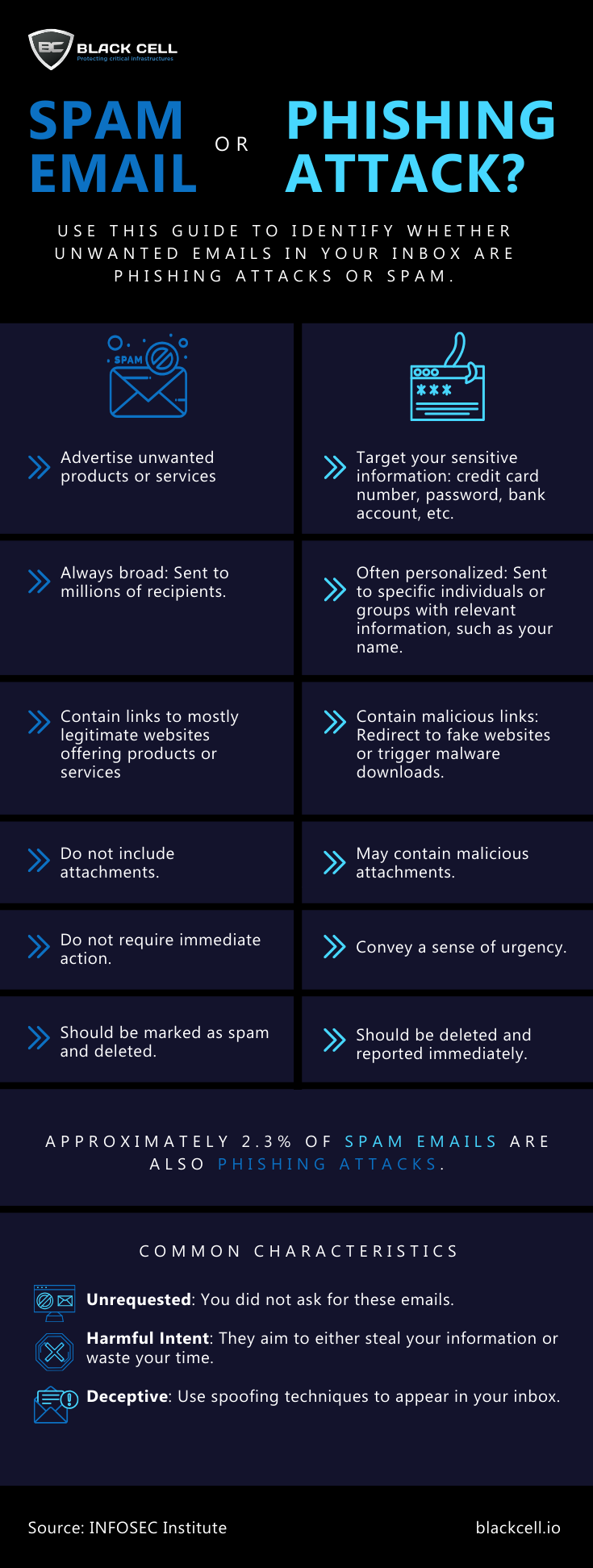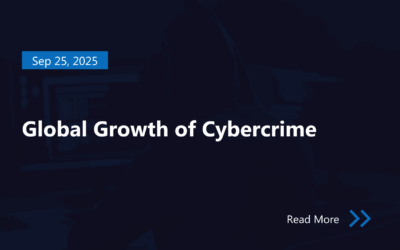In today’s digital age, our inboxes are often inundated with unwanted emails. Whether it’s a harmless advertisement or a malicious attempt to steal your personal information, understanding the difference between spam emails and phishing attacks is crucial. To help you navigate your inbox more safely, we’ve created an infographic guide that highlights the key characteristics of each type of email.
Understanding Spam Emails
Spam emails are the digital equivalent of junk mail. They flood your inbox with unwanted advertisements and promotions for products or services. Here are some common traits of spam emails:
- Unsolicited Ads: Spam emails often advertise products or services that you didn’t request.
- Mass Distribution: These emails are sent to millions of recipients in one go.
- Legitimate Links: While they may include links to real websites, these links often lead to unwanted advertisements.
- No Attachments: Typically, spam emails do not contain attachments.
- Non-Urgent: They do not create a sense of urgency.
- Action: Mark these emails as spam and delete them to keep your inbox clutter-free.
Spotting Phishing Attacks
Phishing attacks, on the other hand, are far more sinister. These emails are crafted to deceive you into giving away your sensitive information, such as passwords, credit card numbers, or bank account details. Key characteristics of phishing emails include:
- Personalized Targeting: Often sent to specific individuals or groups, and may include personal details like your name.
- Malicious Links: These emails contain links to fake websites designed to steal your information or download malware onto your device.
- Malicious Attachments: Phishing emails may include harmful attachments that can infect your computer.
- Sense of Urgency: They often create a sense of urgency to prompt immediate action.
- Action: Delete these emails immediately and report them to your email provider to help protect others.
Shared Traits
Both spam emails and phishing attacks share some common characteristics, making them tricky to distinguish at times:
- Unsolicited: Neither type of email is one you asked to receive.
- Harmful: While spam wastes your time, phishing attacks aim to steal your information.
- Illegitimate: Both use techniques like spoofing to bypass your email’s spam filters and land in your inbox.
To help you better identify these threats, we’ve created an easy-to-follow infographic. This visual guide breaks down the distinct and shared traits of spam emails and phishing attacks, providing clear, actionable tips to keep your information safe.
Source: INFOSEC Institute
Author

Péter Szöllősi
OFFENSIVE SECURITY MANAGER
Related Posts
Top 4 Cyber Threats Security Leaders Feel Least Prepared For
Even the most experienced security leaders admit they’re not fully ready for every threat lurking...
Global Growth of Cybercrime
In today’s hyper-connected world, cybercrime is no longer a distant threat - it’s a looming...





